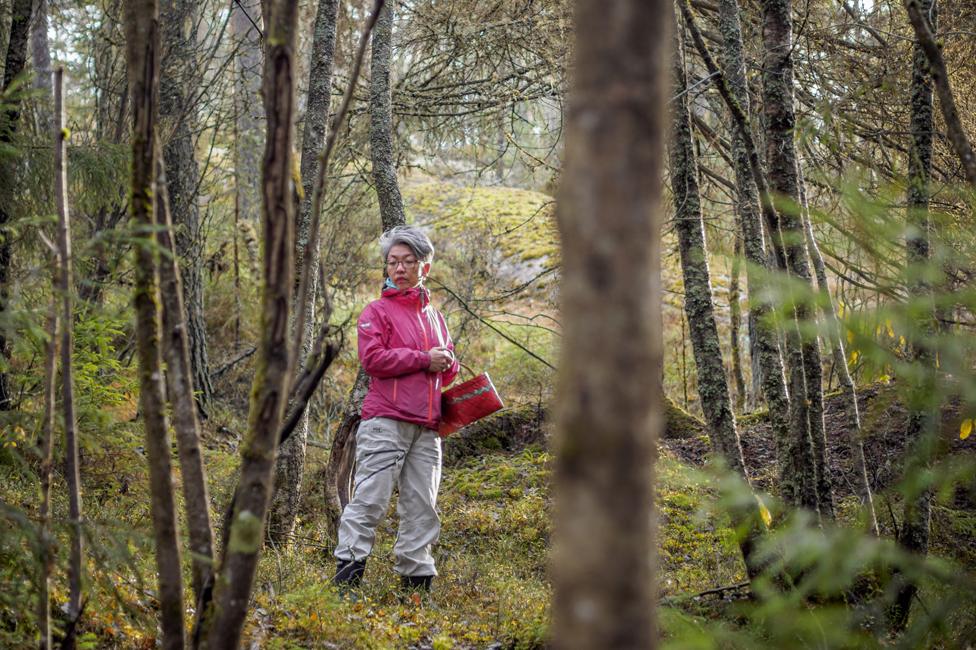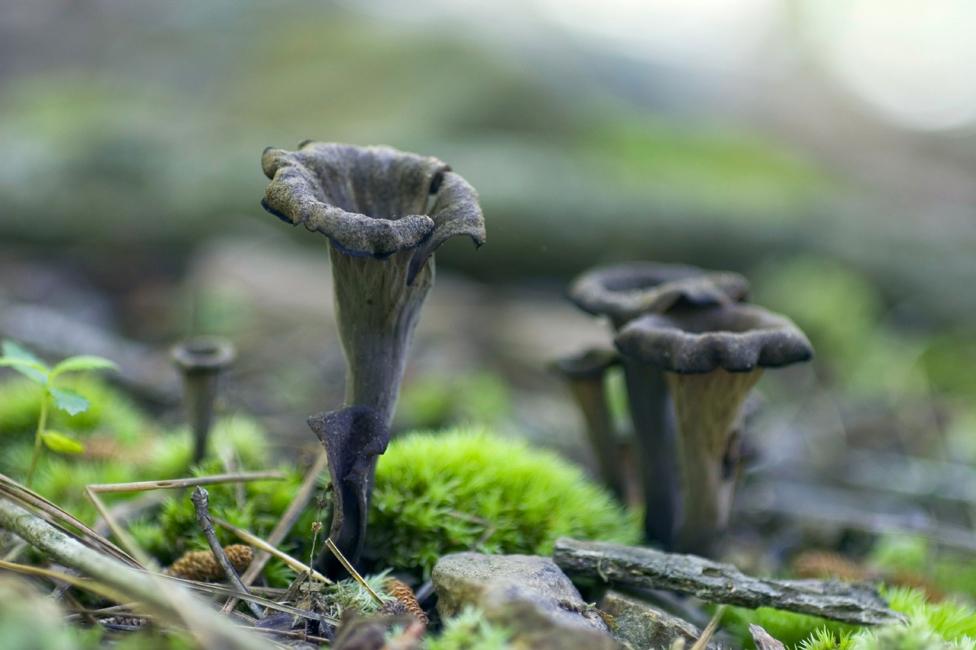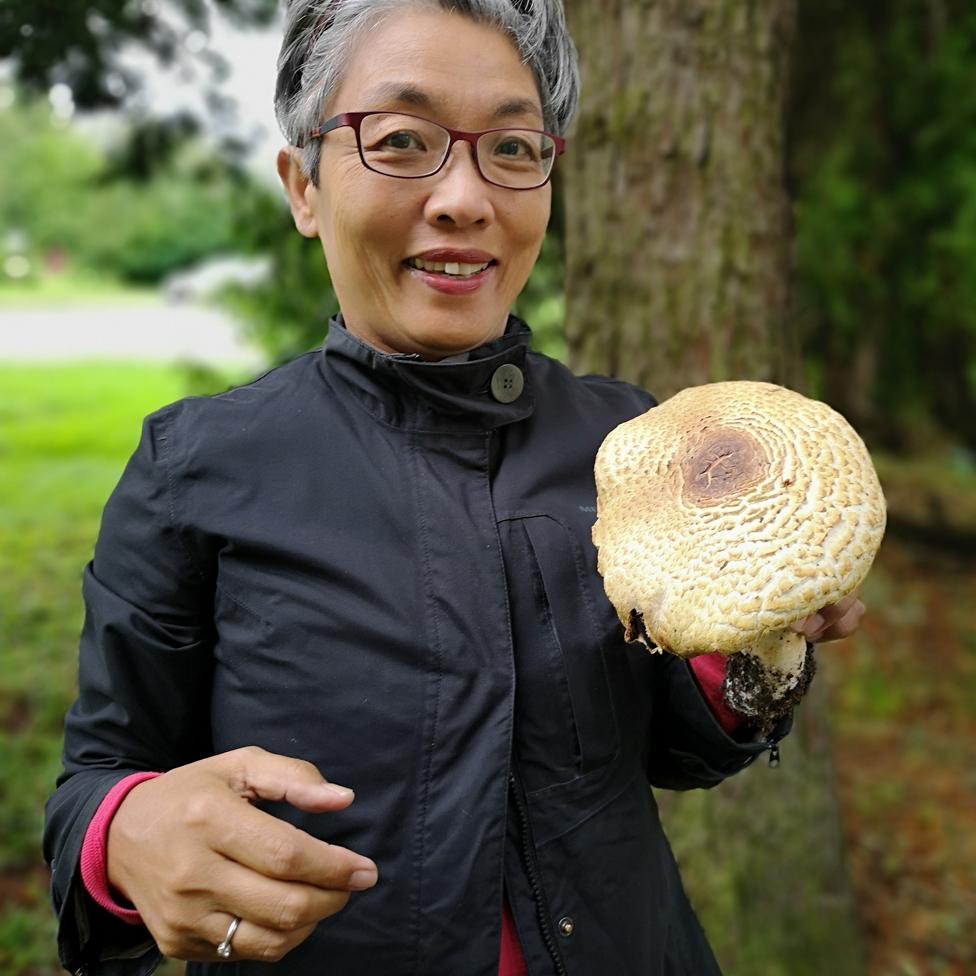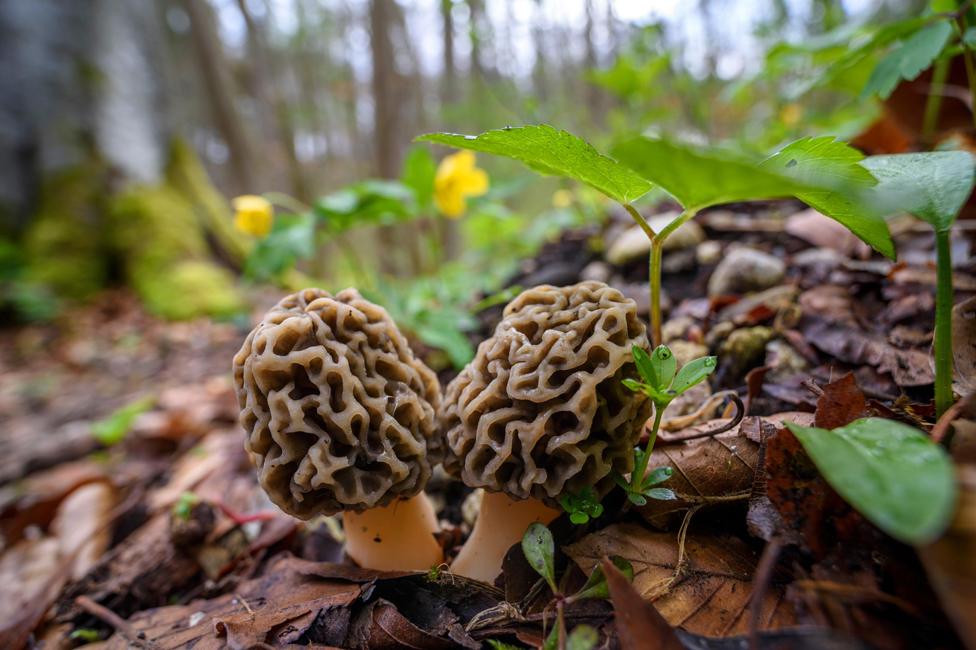'Mushroom foraging saved me from my grief'
- Published


When Long Litt Woon lost her husband, she was overcome by grief. She rediscovered happiness in an unlikely place - in the woods, among the mushrooms.
Long Litt Woon had just finished showering and was about to have breakfast when the phone rang. It was her husband Eiolf's colleague. Eiolf had collapsed at the office and was being rushed to the hospital in an ambulance. As Woon considered packing a bag of things her husband might need, like a toothbrush and perhaps some pyjamas, the phone rang again. It was a doctor from the hospital. Eiolf was dead at the age of 54.
Woon met Eiolf when she was 18. She had left her home in Malaysia to spend a year as an exchange student in Norway. The two hit it off immediately. Eiolf was well-read, funny and knew where Malaysia was on a map. They fell in love, and Woon rearranged her life to stay in his home country of Norway. "He made me a better version of myself," Woon says. "It was easy to be with him."
Together they built a life in Oslo. They enjoyed visiting museums and restaurants and the comforts of a familiar and loving partnership. Eiolf worked as a political scientist and an architect, while Woon worked as an anthropologist. They were happy.

Then, in the summer of 2010, their 32-year-long love story came to a sudden end. "He went to work and he never came home," Woon says. "The whole thing was just unreal."
Following Eiolf's death, Woon tried yoga, meditation - anything anyone suggested to help pull her from her sorrow. She didn't go through the five stages of grief - denial, anger, bargaining, depression and acceptance - rather, she experienced it as an erratic mess. She felt detached from her friends and society in general.
But one day, months later, she remembered a beginners' course on mushrooms offered by the Greater Oslo Fungi and Useful Plant Society, which she and Eiolf had considered enrolling on. She decided to give it a try. "Lo and behold, it was what saved me," Woon says.
The first lesson in the Natural History Museum at the University of Oslo covered the parts of a mushroom and what to take on a mushroom foraging trip, and introduced the 15 species of mushrooms the class would learn to identify during the course. A few days later, they visited the woods. Woon found it frightening to be out in the thick of the trees. In Malaysia, wandering through the jungle was a dangerous and unheard-of pastime. Woon couldn't shake the feeling that she didn't belong clambering over roots and shrubs.

Find out more


But as she walked further into the woods, the outside world began to fall away. She tuned into the sights, sounds and smells of the forest and felt the turmoil swirling around in her head begin to subside. She was hooked.
Woon soon started finding in the wild the mushrooms that she learned about in the classroom, and every one felt like a step on her journey out of grief. The mushrooms gave her something to hold on to, a glimmer of happiness with the promise of more ahead.
Shortly after starting the course, Woon was in the woods when she came across a black trumpet, a mushroom she describes as looking like a dried leaf. Despite this, the black trumpet is extremely good to eat and was the first highly sought-after mushroom Woon had found on her own. It was a big moment. "I experienced joy for the first time after my husband died," she says. "When everything is dark, this mushroom suddenly lights up your day."

When Carl Linnaeus created a classification system for all animals and plants, he couldn't quite place mushrooms. He put them under the animal kingdom in the subcategory of "chaos", before later giving them a category of their own. Woon threw herself into this "chaos". She learned that with mushrooms there are no simple answers or shortcuts. Finding and correctly identifying each new variety involved an often arduous process of trekking through the woods, fighting the elements and keeping focused on the hunt, yet still sometimes returning home with an empty basket.
She didn't mind. In fact she took comfort in the way the unpredictability and disappointments of mushroom foraging reflected her own internal tumult.
She also embraced the mental stillness and concentration needed for the task, qualities that came to Eiolf so easily. Mushrooms hide in the shadows and change shape and size as they age. Woon might walk by a tree many times before noticing what was sprouting at its roots. She learned to shut out any thoughts, sad or otherwise, that might distract her. "You need to really be there, be present in the moment," she says. "You have to get into mushroom mode."

The further Woon delved into the world of mushrooms, the more open she became to new experiences. She met new people and visited places in Oslo she had never been before. She learned mushroom classification and Latin names and began gathering edible wild plants too. She passed the test offered by the Norwegian Mycological Association to become a certified mushroom professional, correctly identifying 150 mushroom species. For the first time since Eiolf died, studying for that test gave Woon a firm sense of direction. She discovered she was good at it and could rise to expert level with a bit of effort.
"When Eiolf died, there was a big hole in my life," Woon says. "That was the only thing that was good about my life at that point. So I just had to grip it hard."

In some ways, mushroom foraging also highlighted Eiolf's absence. When Woon hosted a mushroom-themed dinner party with her new friends, she realised these people would never meet him, and he would never meet them. But that was OK. "Around our old friends, I was just a widow," Woon says. "With these new people, I could stand on my own two feet."
At the same time, she was learning, slowly, to become someone new.
"When you experience a huge loss that goes to the centre of your identity, how you identify yourself, moving on means having to redefine that identity," she says. "Of course you become a different person."

Woon and a mushroom known as the Prince
Woon has since written a book detailing her experience called The Way Through the Woods: Of Mushrooms and Mourning. But interestingly, she speaks only briefly of Eiolf in the book.
"Some people asked me why didn't I write more about him. I write about him only indirectly because I wanted to write about the loss of him, and the loss of this relationship and what it takes to move on," she says.
Throughout her mushroom education, Woon discovered she had a favourite mushroom, the morel. After a friend told her about morels popping up in a flower bed in a neighbourhood on Oslo's east side, she began itching to create a suitable habitat of her own. She put down bark in her garden, hoping for some growth. And then, she waited.

The week before the anniversary of Eiolf's death, a couple of years after he died, Woon was eating her breakfast out in the garden when something caught her eye. She ran inside the cottage for her glasses.
As she emerged into the garden, there they were: two morels. "You look for signs that he's still thinking about you, [you hope] that he will send you a sign, a wink, a wave, and you know that he's not completely gone," she says. "For me, those true morels were a sign from Eiolf."
When the day marking the anniversary of Eiolf's death arrived, Woon ran out of the cottage even before beginning her breakfast. There, poking up through the bark, was a third morel. Her thoughts went to Eiolf. In her mind, she said a silent thank you.
You may also be interested in:

Can you guide a spacecraft into orbit around Mars and cook for eight people morning and night? Yes, if you get up at 5am, and your name is BP Dakshayani. Here the former head of flight dynamics and space navigation for the Indian space agency explains how she did it - and the housework too.
Rocket woman: How to cook curry and get a spacecraft into Mars orbit